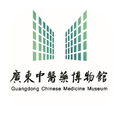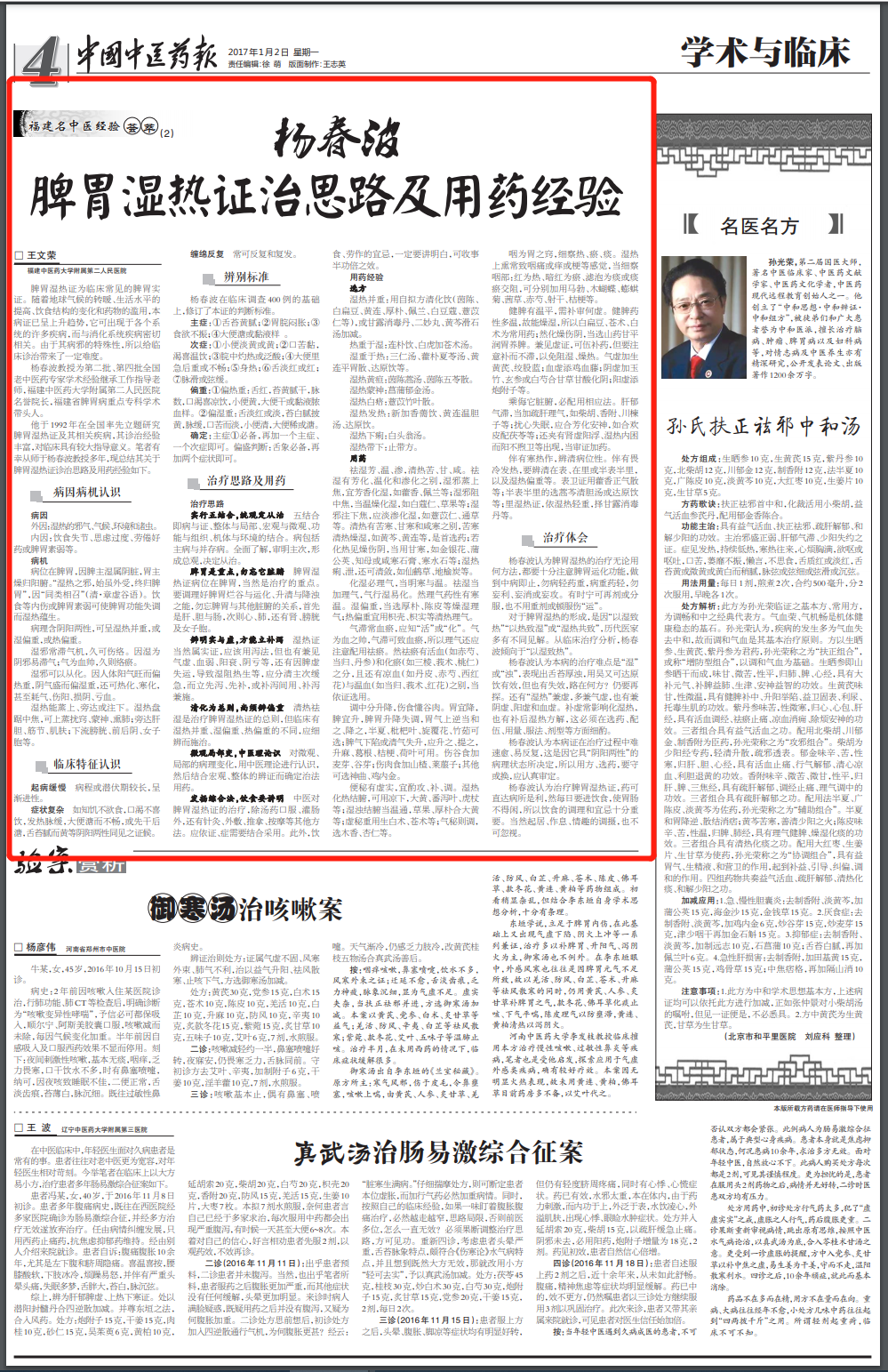
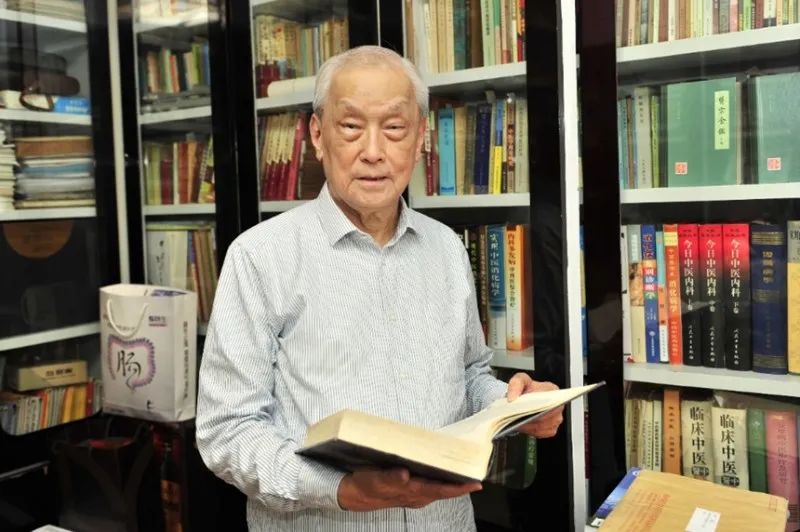 ▲ Master Yang Chunbo (1934.1—)
▲ Master Yang Chunbo (1934.1—)
Professor Yang Chunbo is a third-generation Master of Traditional Chinese Medicine (TCM), a renowned TCM physician in Fujian Province, and the honorary president of the Second People’s Hospital Affiliated to Fujian University of Traditional Chinese Medicine. He is also a leading academic figure in the field of spleen and stomach diseases in Fujian Province and a guiding teacher for the second and fourth batches of national TCM expert academic experience inheritance. In 1992, he was the first in the country to initiate research on Spleen-Stomach Damp-Heat Syndrome and its related diseases. Currently, Professor Yang’s treatment approaches and medication experience for Spleen-Stomach Damp-Heat Syndrome are summarized as follows for the benefit of colleagues.
The Spleen-Stomach Damp-Heat Syndrome is a common clinical syndrome of the spleen and stomach. With the warming of the Earth’s climate, improvements in living standards, changes in dietary structure, and the abuse of medications, this syndrome has shown an upward trend. It can manifest in many diseases across various systems, closely related to digestive system diseases. Due to the particularity of its pathogenic factors, it poses certain difficulties for clinical diagnosis and treatment.
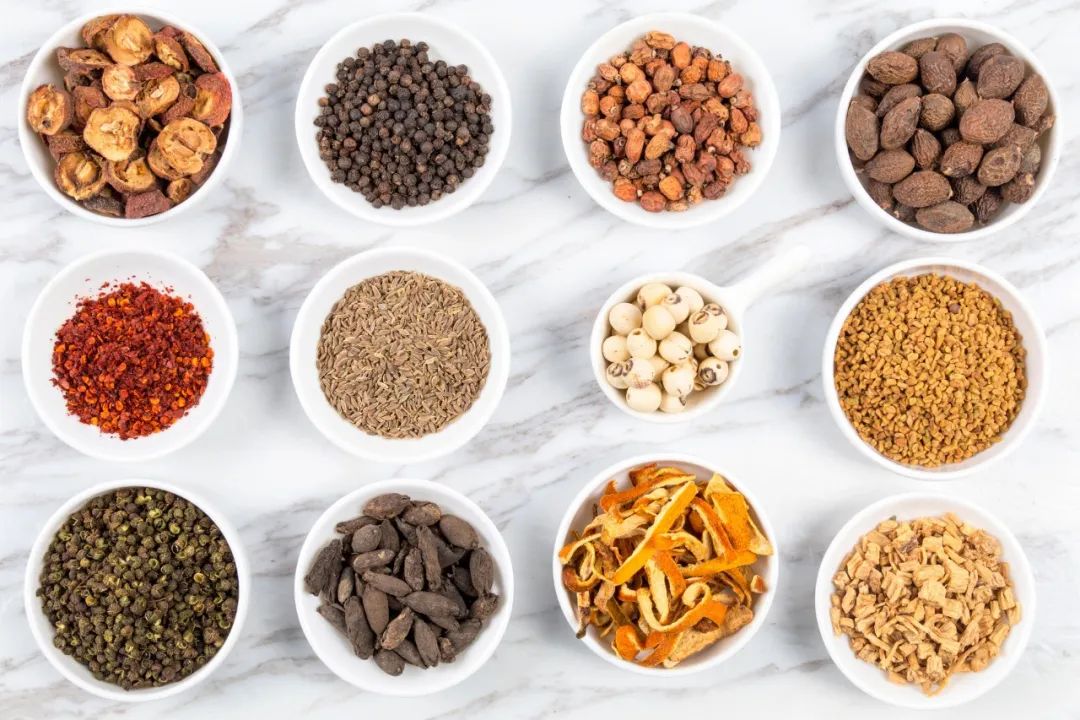
➤ Understanding of Pathogenesis
● Etiology
External Factors: Damp-heat pathogenic qi, climate, environment, and various insects.Internal Factors: Dietary irregularities, excessive thinking, overwork, or inherent weakness of the spleen and stomach.● PathogenesisThe disease is located in the spleen and stomach, as the spleen governs dampness (a yin organ), while the stomach governs dryness (a yang organ). “Damp-heat pathogenic factors, although initially received externally, ultimately affect the spleen and stomach,” due to the principle of “similarities attract” (as stated by Zhang Xugu in the Qing Dynasty). Internal injuries from diet or inherent weakness of the spleen and stomach can lead to dysfunction of the spleen and stomach, resulting in the accumulation of damp-heat.The pathology contains both yin and yang characteristics, which can present as equal damp-heat, or with a predominance of dampness or heat.Dampness often stagnates the qi mechanism, which can lead to collateral damage over time. Since dampness is a yin pathogen, it easily stagnates qi; qi is the commander of blood, and prolonged stagnation can lead to blood stasis.Dampness can transform. Due to the body’s yang qi being vigorous and leaning towards heat, and the yin qi being abundant and leaning towards dampness, it can also transform into heat, cold, or even consume qi, injure yang, damage yin, and deplete blood.Damp-heat can ascend, spread laterally, or descend. When damp-heat resides in the middle jiao, it can ascend to disturb the orifices, cloud the spirit, and affect the lungs; spread laterally to the liver, gallbladder, tendons, and skin; or descend to the bladder, anterior and posterior yin, and the uterus in women.➤ Clinical CharacteristicsSlow OnsetThe course of the disease or latent period is relatively long, presenting progressively.Complex SymptomsSuch as hunger without desire to eat, thirst without preference for drinking, fever with a slow pulse, loose stools that are not smooth, or first dry then loose, with a greasy yellow tongue coating, etc., showing symptoms of both yin and yang.Chronic and Recurrent Symptoms are often repeated and relapsing.

➤ Diagnostic CriteriaBased on a clinical survey of 400 cases, Yang Chunbo revised the diagnostic criteria for this syndrome.Main Symptoms:① Yellow greasy tongue coating; ② Distension and fullness in the epigastric region; ③ Poor appetite; ④ Loose stools or mucus-like stools.Secondary Symptoms:① Light yellow or yellow urine; ② Bitter and sticky mouth, thirst with a preference for warm drinks; ③ Burning sensation in the epigastric region or acid reflux; ④ Urgency and heaviness after defecation or difficulty; ⑤ Fever; ⑥ Pale red or red tongue; ⑦ Slippery or wiry pulse.Predominance:① Predominantly Heat: Red tongue, yellow greasy dry coating, rapid pulse, thirst with a preference for cool drinks, yellow urine, dry or mucus-blood-like stools. ② Predominantly Damp: Pale red or pale tongue, white greasy coating with yellow, slow pulse, bitter and bland mouth, clear urine, loose or watery stools.Confirmation:Main symptom ① is essential, plus one main symptom and one secondary symptom. For predominant judgment: the tongue condition is essential, plus two symptoms.➤ Treatment Approaches and Medication● Treatment ApproachImplement the Five Combinations, considering overall treatmentThe Five Combinations refer to the integration of disease and syndrome, overall and local, macro and micro, function and structure, and the body and environment. The disease includes the main disease and coexisting diseases. A comprehensive understanding, clarifying priorities, forming an overall view, and determining treatment direction are essential.
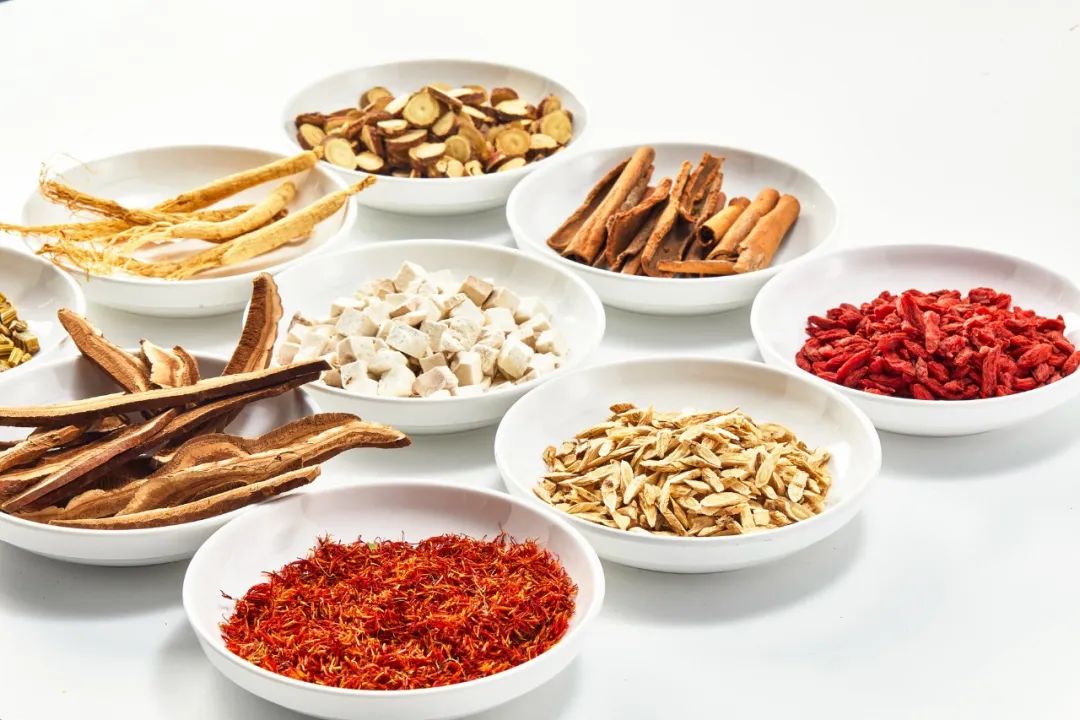
The Spleen and Stomach are the Focus, Do Not Forget Their Relationship with Other OrgansThe Spleen-Stomach Damp-Heat Syndrome is located in the spleen and stomach, which are naturally the focus of treatment. It is essential to regulate the spleen and stomach’s ability to transform and transport, as well as to ascend clear and descend turbid, while not forgetting the relationship between the spleen and stomach and other organs, primarily the liver, gallbladder, and intestines, followed by the heart, lungs, and also the kidneys, bladder, and uterus.Distinguish Between Excess and Deficiency to Determine TreatmentThe Damp-Heat Syndrome is certainly an excess syndrome, and should be treated with purging methods, but there may also be concurrent qi deficiency, blood weakness, yang decline, yin deficiency, etc. Additionally, due to spleen deficiency leading to dysfunction, resulting in dampness obstructing heat generation, it is necessary to clarify priorities and urgency, and determine whether to first purge, first tonify, or use a combination of both.Clearing and Transforming is the General Principle, but Differentiation is NecessaryClearing heat and eliminating dampness is the general principle for treating Spleen-Stomach Damp-Heat Syndrome, but clinically there are different presentations of equal damp-heat, predominant dampness, or predominant heat, which should be carefully differentiated for treatment.Micro and Local Changes, Understanding Through TCM TheoryFor micro and local pathological changes, understanding through TCM theory is necessary, then combined with macro and overall differentiation to determine treatment methods and medications.Promote Comprehensive Methods, Dietary Guidance is ImportantIn TCM treatment of Spleen-Stomach Damp-Heat Syndrome, in addition to oral decoctions and enemas, there are also acupuncture, external applications, tuina, and massage among other methods. These should be combined according to the syndrome and symptoms. Furthermore, dietary and labor guidelines must be clearly stated to achieve significant results.
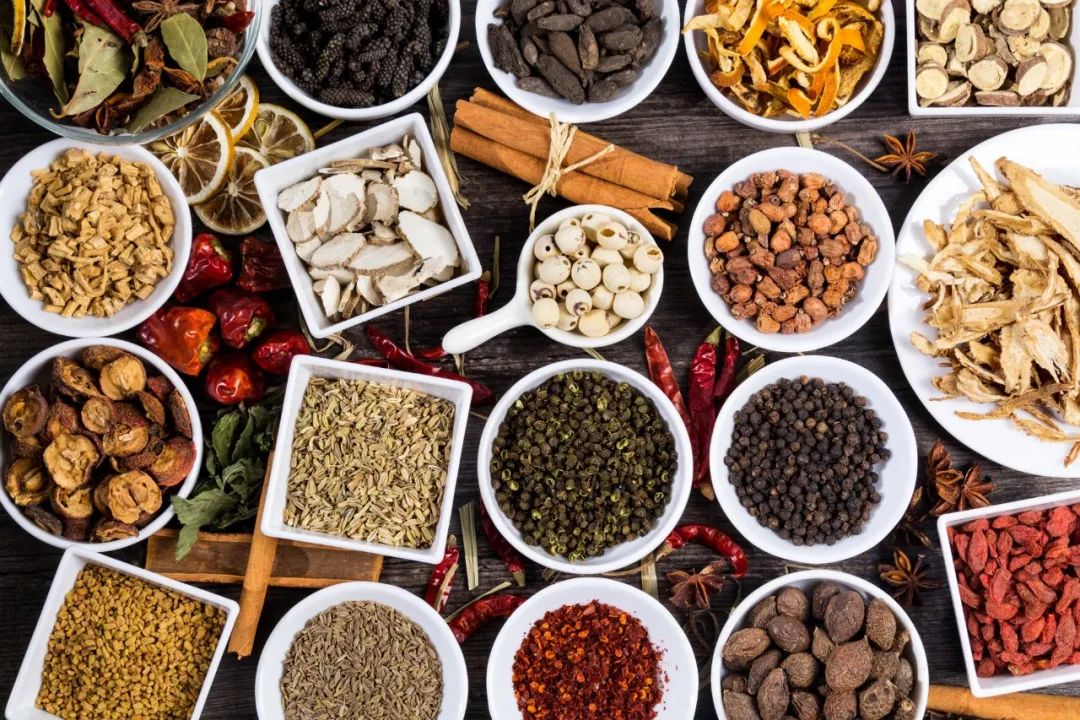
● Medication ExperiencePrescription SelectionEqual Damp-Heat: Use a self-formulated Qinghua Decoction (Yin Chen (Artemisia capillaris), Bai Bian Dou (Lablab purpureus), Huang Lian (Coptis chinensis), Hou Po (Magnolia officinalis), Pei Lan (Eupatorium aromaticum), Bai Dou Kou (Amomum villosum), Yi Yi Ren (Coix lacryma-jobi), etc.), or Gan Lu Xiao Du Dan, Er Miao Wan, Huang Qin Shi Wei Decoction with modifications.Heat Predominant:Lian Po Decoction, Bai Hu Decoction with Cang Zhu (Atractylodes lancea).Damp Predominant:San Ren Decoction, Huo Po Xia Ling Decoction, Huang Lian Ping Wei San, Da Yuan Decoction, etc.Damp-Heat Jaundice:Yin Chen Hao Decoction, Yin Chen Wu Ling San.Damp-Heat Disturbing the Spirit:Chang Pu Yu Jin Decoction.Damp-Heat Skin Issues:Yi Yi Zhu Ye San.Damp-Heat Fever:Newly Added Xiang Ru Decoction, Huang Lian Wen Dan Decoction, Da Yuan Decoction.Damp-Heat Diarrhea:Bai Tou Weng Decoction.Damp-Heat Vaginal Discharge:Stop Discharge Formula.MedicationEliminate dampness with aromatic, warming, and draining properties; clear heat with bitter, sweet, and salty properties. Elimination of dampness can be aromatic, warming, or draining. When dampness obstructs the upper jiao, aromatic herbs such as Huo Xiang (Agastache rugosa) and Pei Lan are suitable; when dampness obstructs the middle jiao, warming and drying herbs such as Bai Dou Kou (Amomum villosum) and Cao Guo (Tsaoko) are appropriate; when dampness obstructs the lower jiao, light draining herbs such as Yi Yi Ren (Coix lacryma-jobi) and Tong Cao (Tetrapanax) should be used. Clearing heat can be bitter-cold, sweet-cold, or salty-cold; bitter-cold herbs such as Huang Qin (Scutellaria baicalensis) and Huang Lian (Coptis chinensis) are the first choice; if heat transforms into dryness and injures yin, sweet-cold herbs such as Jin Yin Hua (Lonicera japonica), Pu Gong Ying (Taraxacum), Zhi Mu (Anemarrhena asphodeloides), or salty-cold herbs such as Shi Gao (Gypsum) and Han Shui Shi (Alum) should be used; for damp-heat diarrhea or dysentery, astringent herbs such as Xian He Cao (Agrimonia) and Di Yu (Sanguisorba) can also be used.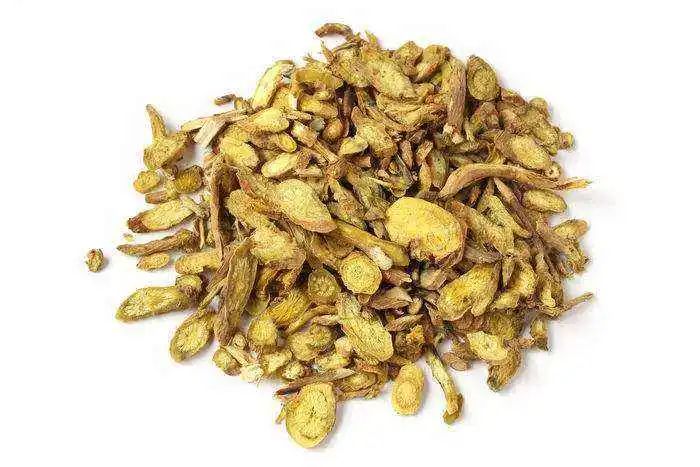 ▲ Huang Qin (Scutellaria baicalensis)To eliminate dampness, it is essential to regulate qi, distinguishing between cold and warm. To eliminate dampness, it is necessary to add qi-regulating herbs, as qi movement facilitates dampness transformation. However, qi-regulating herbs have cold and warm properties. For predominant dampness, choose Hou Po (Magnolia officinalis) and Chen Pi (Citrus reticulata) to dry dampness and regulate qi; for predominant heat, use Zhi Qiao (Aurantii Fructus) and Zhi Shi (Aurantii Fructus Immaturus) to clear heat and regulate qi.Qi stagnation often leads to blood stasis, and it is important to know whether to “activate” or “transform”. Qi is the commander of blood, and qi stagnation can lead to blood stasis, so when regulating qi, it is also necessary to consider using blood-moving herbs. However, blood-moving herbs can be divided into those that invigorate blood (such as Chi Shao (Paeonia lactiflora), Dang Gui (Angelica sinensis), Dan Shen (Salvia miltiorrhiza)) and those that transform stasis (such as San Leng (Sparganium) and E Zhu (Curcuma zedoaria)), and there are also cooling blood (such as Dan Pi (Moutan) and Chi Shao) and warming blood (such as Dang Gui and E Zhu) distinctions, which should be selected according to the syndrome.Regulate the middle and differentiate ascending and descending, understanding food injury. The stomach should descend, and the spleen should ascend. When the ascending and descending functions of the spleen and stomach are disordered, if the stomach qi is rebellious, it should be harmonized and descended, using Ban Xia (Pinellia ternata), Pi Pa Ye (Eriobotrya japonica), Xuan Fu Hua (Inula japonica), and Zhu Ru (Bamboo shavings); if the spleen qi is sinking or the clear qi is not ascending, it should be raised and lifted, using Sheng Ma (Cimicifuga) and Ge Gen (Pueraria lobata), Jie Geng (Platycodon), and He Ye (Lotus leaf). For food injury, add Mai Ya (Hordeum vulgare) for grain injury; add Shan Zha (Crataegus) for meat injury; and others can include Shen Qu (Massa Fermentata) and Ji Nei Jin (Gizzard lining). Constipation can be due to deficiency or excess, and should be treated with attack, tonification, or regulation. For heat accumulation due to damp-heat, cooling herbs such as Da Huang (Rheum) and Fan Xie Ye (Senna) can be used; for damp obstruction, warming and unblocking herbs such as Cao Guo and Hou Po combined with Da Huang can be used; for deficiency constipation, use Sheng Bai Zhu (Atractylodes macrocephala) and Cang Zhu (Atractylodes lancea); for qi constipation, regulate with Mu Xiang (Aucklandia) and Xing Ren (Prunus armeniaca).The throat is the orifice of the stomach, and careful observation of heat, stasis, and phlegm is necessary. Damp-heat ascending often causes throat pain or itchiness or a sensation of obstruction. Careful examination of the throat: redness indicates heat, dark red indicates stasis, and follicles indicate phlegm or phlegm-stasis obstruction, which can be treated with Ma Bo (Fungus) and Mu Die (Butterfly Pea), and other herbs such as Chuan Bei Mu (Fritillaria) and Jie Geng.Strengthening the spleen requires warmth and balance, and tonification must be carefully considered. Spleen tonifying herbs are mostly warming, thus they can dry dampness, so Bai Bian Dou, Cang Zhu, and Bai Zhu are commonly used; however, to transform dryness without injuring yin, Shan Yao (Dioscorea) should be selected for its sweet and moistening properties to nourish the spleen. If deficiency is also present, tonifying herbs can be added, but care must be taken to tonify without causing stagnation, to avoid obstructing dampness and generating heat. For qi deficiency, add Sheng Huang Qi (Astragalus); for blood deficiency, add Ji Xue Teng (Spatholobus); for yin deficiency, add Yu Zhu (Polygonatum) and Xuan Shen (Scrophularia) or Bai Shao (Paeonia) combined with Gan Cao (Glycyrrhiza) for sweet and sour yin transformation; for yang deficiency, add Pao Fu Zi (Aconitum).When other organs are affected, corresponding methods must be used. For liver qi stagnation, add liver-soothing and qi-regulating herbs such as Chai Hu (Bupleurum), Xiang Fu (Cyperus), and Chuan Lian Zi (Melia); for disturbed heart and insomnia, combine aromatic and calming herbs such as He Huan Pi (Albizia) with Fu Ling (Poria); if there is concurrent kidney deficiency with floating yang, and damp-heat internally obstructing, careful examination and medication adjustment is necessary.
▲ Huang Qin (Scutellaria baicalensis)To eliminate dampness, it is essential to regulate qi, distinguishing between cold and warm. To eliminate dampness, it is necessary to add qi-regulating herbs, as qi movement facilitates dampness transformation. However, qi-regulating herbs have cold and warm properties. For predominant dampness, choose Hou Po (Magnolia officinalis) and Chen Pi (Citrus reticulata) to dry dampness and regulate qi; for predominant heat, use Zhi Qiao (Aurantii Fructus) and Zhi Shi (Aurantii Fructus Immaturus) to clear heat and regulate qi.Qi stagnation often leads to blood stasis, and it is important to know whether to “activate” or “transform”. Qi is the commander of blood, and qi stagnation can lead to blood stasis, so when regulating qi, it is also necessary to consider using blood-moving herbs. However, blood-moving herbs can be divided into those that invigorate blood (such as Chi Shao (Paeonia lactiflora), Dang Gui (Angelica sinensis), Dan Shen (Salvia miltiorrhiza)) and those that transform stasis (such as San Leng (Sparganium) and E Zhu (Curcuma zedoaria)), and there are also cooling blood (such as Dan Pi (Moutan) and Chi Shao) and warming blood (such as Dang Gui and E Zhu) distinctions, which should be selected according to the syndrome.Regulate the middle and differentiate ascending and descending, understanding food injury. The stomach should descend, and the spleen should ascend. When the ascending and descending functions of the spleen and stomach are disordered, if the stomach qi is rebellious, it should be harmonized and descended, using Ban Xia (Pinellia ternata), Pi Pa Ye (Eriobotrya japonica), Xuan Fu Hua (Inula japonica), and Zhu Ru (Bamboo shavings); if the spleen qi is sinking or the clear qi is not ascending, it should be raised and lifted, using Sheng Ma (Cimicifuga) and Ge Gen (Pueraria lobata), Jie Geng (Platycodon), and He Ye (Lotus leaf). For food injury, add Mai Ya (Hordeum vulgare) for grain injury; add Shan Zha (Crataegus) for meat injury; and others can include Shen Qu (Massa Fermentata) and Ji Nei Jin (Gizzard lining). Constipation can be due to deficiency or excess, and should be treated with attack, tonification, or regulation. For heat accumulation due to damp-heat, cooling herbs such as Da Huang (Rheum) and Fan Xie Ye (Senna) can be used; for damp obstruction, warming and unblocking herbs such as Cao Guo and Hou Po combined with Da Huang can be used; for deficiency constipation, use Sheng Bai Zhu (Atractylodes macrocephala) and Cang Zhu (Atractylodes lancea); for qi constipation, regulate with Mu Xiang (Aucklandia) and Xing Ren (Prunus armeniaca).The throat is the orifice of the stomach, and careful observation of heat, stasis, and phlegm is necessary. Damp-heat ascending often causes throat pain or itchiness or a sensation of obstruction. Careful examination of the throat: redness indicates heat, dark red indicates stasis, and follicles indicate phlegm or phlegm-stasis obstruction, which can be treated with Ma Bo (Fungus) and Mu Die (Butterfly Pea), and other herbs such as Chuan Bei Mu (Fritillaria) and Jie Geng.Strengthening the spleen requires warmth and balance, and tonification must be carefully considered. Spleen tonifying herbs are mostly warming, thus they can dry dampness, so Bai Bian Dou, Cang Zhu, and Bai Zhu are commonly used; however, to transform dryness without injuring yin, Shan Yao (Dioscorea) should be selected for its sweet and moistening properties to nourish the spleen. If deficiency is also present, tonifying herbs can be added, but care must be taken to tonify without causing stagnation, to avoid obstructing dampness and generating heat. For qi deficiency, add Sheng Huang Qi (Astragalus); for blood deficiency, add Ji Xue Teng (Spatholobus); for yin deficiency, add Yu Zhu (Polygonatum) and Xuan Shen (Scrophularia) or Bai Shao (Paeonia) combined with Gan Cao (Glycyrrhiza) for sweet and sour yin transformation; for yang deficiency, add Pao Fu Zi (Aconitum).When other organs are affected, corresponding methods must be used. For liver qi stagnation, add liver-soothing and qi-regulating herbs such as Chai Hu (Bupleurum), Xiang Fu (Cyperus), and Chuan Lian Zi (Melia); for disturbed heart and insomnia, combine aromatic and calming herbs such as He Huan Pi (Albizia) with Fu Ling (Poria); if there is concurrent kidney deficiency with floating yang, and damp-heat internally obstructing, careful examination and medication adjustment is necessary.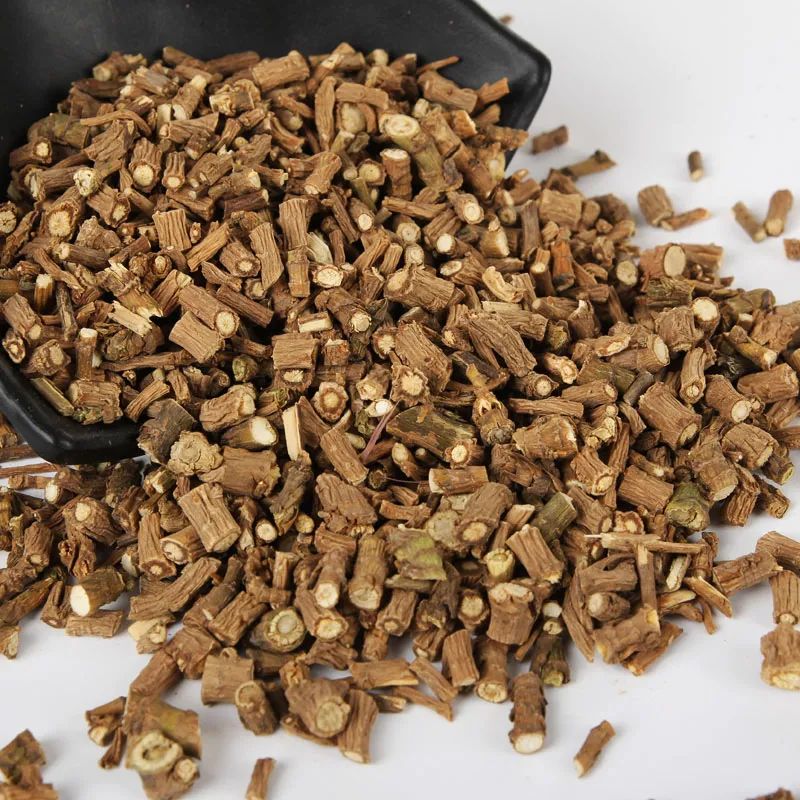 ▲ Chai Hu (Bupleurum)Accompanied by alternating chills and fever, clarify the location and nature of the disease. If there are chills and fever, it is necessary to clarify whether it is exterior, interior, or half-exterior half-interior, as well as the predominance of damp-heat. For exterior defense syndrome, use Huo Xiang Zheng Qi San; for half-exterior half-interior, choose Ao Qing Qing Dan Decoction or Da Yuan Decoction; for interior damp-heat syndrome, select Gan Lu Xiao Du Dan according to the severity of damp-heat.➤ Treatment InsightsYang Chunbo believes that in treating Spleen-Stomach Damp-Heat, regardless of the method used, it is crucial to pay close attention to the spleen and stomach’s transport functions, ensuring that treatment is appropriate to the condition, avoiding heavy medications for mild conditions and light medications for severe conditions, and avoiding reckless purging, excessive elimination, or aggressive attacks. Sometimes it is better to use smaller doses or divided doses rather than heavy doses or single doses that may harm the “transport” function.Regarding the formation of Spleen-Stomach Damp-Heat, it is due to “dampness causing heat,” “heat causing dampness,” or “damp-heat co-occurring,” with various interpretations from historical physicians. From clinical treatment analysis, Yang Chunbo tends to favor the view of “dampness causing heat.” Yang Chunbo believes that the difficulty in treating this syndrome lies in the “dampness” or “turbidity,” which is manifested by a thick and turbid tongue coating. Wu You can achieve effective results with Da Yuan Decoction, but there are also instances of ineffectiveness, leading to further exploration. Additionally, “damp-heat” often coexists with deficiency, frequently with qi deficiency, but also with yin deficiency, yang deficiency, and blood deficiency. Tonifying deficiency often affects the transformation of damp-heat, and there are also formulas to resolve damp-heat after tonification, which must be carefully considered in terms of prescription, compatibility, dosage, administration, and dosage form.Yang Chunbo believes that this syndrome is difficult to cure quickly and prone to recurrence during treatment, which is determined by its pathological state of “yin and yang duality,” so the choice of formulas and medications must be carefully evaluated and adjusted.Yang Chunbo believes that in treating Spleen-Stomach Damp-Heat, medications can directly reach the disease site, which is beneficial, but daily dietary intake must be maintained to prevent the gastrointestinal tract from being idle, making dietary regulation and guidelines extremely important. Of course, lifestyle, rest, and emotional regulation should not be overlooked.
▲ Chai Hu (Bupleurum)Accompanied by alternating chills and fever, clarify the location and nature of the disease. If there are chills and fever, it is necessary to clarify whether it is exterior, interior, or half-exterior half-interior, as well as the predominance of damp-heat. For exterior defense syndrome, use Huo Xiang Zheng Qi San; for half-exterior half-interior, choose Ao Qing Qing Dan Decoction or Da Yuan Decoction; for interior damp-heat syndrome, select Gan Lu Xiao Du Dan according to the severity of damp-heat.➤ Treatment InsightsYang Chunbo believes that in treating Spleen-Stomach Damp-Heat, regardless of the method used, it is crucial to pay close attention to the spleen and stomach’s transport functions, ensuring that treatment is appropriate to the condition, avoiding heavy medications for mild conditions and light medications for severe conditions, and avoiding reckless purging, excessive elimination, or aggressive attacks. Sometimes it is better to use smaller doses or divided doses rather than heavy doses or single doses that may harm the “transport” function.Regarding the formation of Spleen-Stomach Damp-Heat, it is due to “dampness causing heat,” “heat causing dampness,” or “damp-heat co-occurring,” with various interpretations from historical physicians. From clinical treatment analysis, Yang Chunbo tends to favor the view of “dampness causing heat.” Yang Chunbo believes that the difficulty in treating this syndrome lies in the “dampness” or “turbidity,” which is manifested by a thick and turbid tongue coating. Wu You can achieve effective results with Da Yuan Decoction, but there are also instances of ineffectiveness, leading to further exploration. Additionally, “damp-heat” often coexists with deficiency, frequently with qi deficiency, but also with yin deficiency, yang deficiency, and blood deficiency. Tonifying deficiency often affects the transformation of damp-heat, and there are also formulas to resolve damp-heat after tonification, which must be carefully considered in terms of prescription, compatibility, dosage, administration, and dosage form.Yang Chunbo believes that this syndrome is difficult to cure quickly and prone to recurrence during treatment, which is determined by its pathological state of “yin and yang duality,” so the choice of formulas and medications must be carefully evaluated and adjusted.Yang Chunbo believes that in treating Spleen-Stomach Damp-Heat, medications can directly reach the disease site, which is beneficial, but daily dietary intake must be maintained to prevent the gastrointestinal tract from being idle, making dietary regulation and guidelines extremely important. Of course, lifestyle, rest, and emotional regulation should not be overlooked.
Important Statement:
Due to individual differences in constitution and condition, the prescriptions and dosages in this case are only applicable to the specific patient’s condition at that time. Without TCM differentiation and diagnosis, do not replicate the prescriptions and dosages in this case. Readers in need should seek treatment at a regular hospital to avoid delaying their condition.

Source | Content compiled from: “China Traditional Chinese Medicine News” January 2, 2017, Fourth Edition, Author: Wang Wenrong, Second People’s Hospital Affiliated to Fujian University of Traditional Chinese Medicine
Editor | Shan Lai Editing Team

